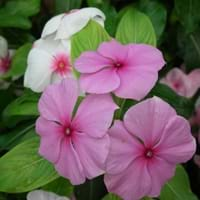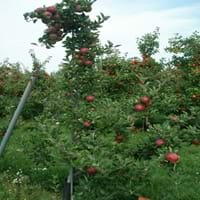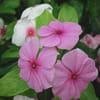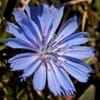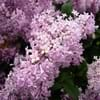Life Span
Perennial
Annual
Type
Flowering Plants, Shrubs
Fruit
Origin
Madagascar
Eastern Europe, Southern Europe, Russia/Siberia, Western Asia
Types
Purple vinca, Vinca, cherry red, strawberry color
Goldrush apple tree, Gala apple tree, Fuji apple tree
Number of Varieties
Not Available
Habitat
Subtropical climates, Tropical regions
Fertile bottom land
USDA Hardiness Zone
4-9
5-9
Sunset Zone
A1, A2, A3, H1, H2, 1a, 1b, 2a, 2b, 3a, 3b, 4, 5, 6, 7, 8, 9, 10, 11, 12, 13, 14, 15, 16, 17, 18, 19, 20, 21, 22, 23, 24
1a, 1b, 2a, 2b, 3a, 10, 11
Habit
Clump-Forming
Oval or Rounded
Flower Color
Magenta, Pink, Rose
White, Pink
Flower Color Modifier
Not Available
Bicolor
Fruit Color
Not Available
Dark Red
Leaf Color in Spring
Dark Green
Green
Leaf Color in Summer
Dark Green
Green
Leaf Color in Fall
Dark Green
Green, Light Yellow, Brown
Leaf Color in Winter
Dark Green
Light Green
Plant Season
Fall, Spring, Summer, Winter
Spring, Fall
Sunlight
Partial shade
Full Sun
Type of Soil
Loamy, Sandy, Well drained
Loam
The pH of Soil
Neutral, Slightly Alkaline
Acidic, Neutral
Soil Drainage
Well drained
Well drained
Bloom Time
Fall, Spring, Summer
Spring
Tolerances
Drought, Pollution, Salt
Drought
Where to Plant?
Container, Ground, Pot
Ground
How to Plant?
Seedlings, Stem Planting, Transplanting
Seedlings
Plant Maintenance
Medium
Medium
Watering Requirements
Does not require lot of watering, Medium
Average Water Needs, Do Not over Water, Requires regular watering
In Summer
Lots of watering
Lots of watering
In Spring
Moderate
Moderate
In Winter
Average Water
Average Water
Soil pH
Neutral, Slightly Alkaline
Acidic, Neutral
Soil Type
Loamy, Sandy, Well drained
Loam
Soil Drainage Capacity
Well drained
Well drained
Sun Exposure
Partial shade
Full Sun
Pruning
Prune ocassionally
Remove crossing or rubbing branches, Remove damaged fruit, Remove damaged leaves, Remove dead branches, Remove dead leaves, Remove dead or diseased plant parts
Fertilizers
All-Purpose Liquid Fertilizer
All-Purpose Liquid Fertilizer, fertilize in growing season, Nitrogen
Pests and Diseases
Botrytis Blight, Canker, Crown rot, Pythium rot, Root rot
Red blotch
Plant Tolerance
Drought
Drought
Flower Petal Number
Single
Single
Foliage Texture
Medium
Medium
Foliage Sheen
Glossy
Matte
Attracts
Butterflies
Bees, Birds, Wildlife
Allergy
Intestinal gas, Nausea, Vomiting
Abdominal pain, Urticaria, Vomiting
Aesthetic Uses
Beautification, Showy Purposes
Not Used For Aesthetic Purpose
Beauty Benefits
Not Available
Good for skin
Environmental Uses
Air purification
Air purification, Food for animals, Food for birds, Food for insects
Medicinal Uses
Chest pain, High blood pressure, Inflammation, Sore throat, Tooth ache, Wounds
High cholestrol, Indigestion, Potassium, Rich in Iron, Vitamin A, Vitamin C
Part of Plant Used
Whole plant
Fruits
Other Uses
Decoration Purposes, Showy Purposes, Used as Ornamental plant
Added to salads, Food for animals
Used As Indoor Plant
Yes
No
Used As Outdoor Plant
Yes
Yes
Garden Design
Bedding Plant, Container, Edging
Edible, Feature Plant, Fruit / Fruit Tree
Botanical Name
Catharanthus roseus
MALUS domestica 'Arkansas Black'
Common Name
Madagascar periwinkle or rosy periwinkle
Apple, Arkansas Black Apple, Cooking Apple, Eating Apple
In Hindi
Periwinkle
Arkansas Black Apple
Tree
In German
Immergrün
Arkansas Schwarz Apple
Baum
In French
Pervenche
Arkansas noir d'Apple
Arbre
In Spanish
Bígaro
Arkansas Negro de Apple
Árbol
In Greek
μυρτιά
Αρκάνσας Μαύρο της Apple
Δέντρο
In Portuguese
Mirta
Arkansas Preto da Apple
Árvore
In Polish
Barwinek
Arkansas Czarny jabłko
Drzewo
In Latin
Periwinkle
Texas Niger Apple
Arbor
Phylum
Mollusca
Not Available
Class
Gastropoda
Not Available
Family
Apocynaceae
Rosaceae
Clade
Not Available
Angiosperms, Eudicots, Rosids
Tribe
Not Available
Not Available
Subfamily
Not Available
Not Available
Number of Species
Not Available
Importance of Periwinkle and Arkansas Black Apple
Want to have the most appropriate plant for your garden? You might want to know the importance of Periwinkle and Arkansas Black Apple. Basically, these two plants vary in many aspects. Compare Periwinkle and Arkansas Black Apple as they differ in many characteristics such as their life, care, benefits, facts, etc. Every gardener must at least have the slightest clue about the plants he wants to plant in his garden. Compare their benefits, which differ in many ways like facts and uses. The medicinal use of Periwinkle is Chest pain, High blood pressure, Inflammation, Sore throat, Tooth ache and Wounds whereas of Arkansas Black Apple is High cholestrol, Indigestion, Potassium, Rich in Iron, Vitamin A and Vitamin C. Periwinkle has beauty benefits as follows: Not Available while Arkansas Black Apple has beauty benefits as follows: Not Available.
Compare Facts of Periwinkle vs Arkansas Black Apple
How to choose the best garden plant for your garden depending upon its facts? Here garden plant comparison will help you to solve this query. Compare the facts of Periwinkle vs Arkansas Black Apple and know which one to choose. As garden plants have benefits and other uses, allergy is also a major drawback of plants for some people. Allergic reactions of Periwinkle are Intestinal gas, Nausea and Vomiting whereas of Arkansas Black Apple have Abdominal pain, Urticaria and Vomiting respectively. Having a fruit bearing plant in your garden can be a plus point of your garden. Periwinkle has no showy fruits and Arkansas Black Apple has showy fruits. Also Periwinkle is flowering and Arkansas Black Apple is flowering. You can compare Periwinkle and Arkansas Black Apple facts and facts of other plants too.
